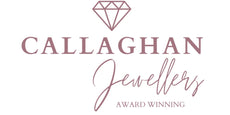Spotting Fake Jewelry: Tips to Identify Genuine Pieces vs. Counterfeits
Purchasing jewelry can be an exciting experience, but it’s crucial to ensure that what you’re buying is authentic. Counterfeit jewelry can mimic the appearance of genuine pieces but lacks the quality, durability, and value of authentic items. Here are practical tips to help you distinguish genuine jewelry from replicas or counterfeits.
1. Know the Hallmarks
What Are Hallmarks?
Hallmarks are tiny stamps or engravings on jewelry that indicate the type and quality of the metal. These are usually found on the inner band of rings, clasps of necklaces, or the back of earrings.
What to Look For:
- Gold: Look for markings like "10K," "14K," "18K," or "24K" indicating the gold’s purity.
- Silver: Genuine silver is often marked "925" for sterling silver, meaning it’s 92.5% pure silver.
- Platinum: Platinum jewelry typically has marks like "PT" or "950."
Red Flags:
If the jewelry lacks any hallmark or has misspelled or inconsistent markings, it may be fake.
2. Perform a Magnet Test
How It Works:
Precious metals like gold, silver, and platinum are non-magnetic. If a piece of jewelry is attracted to a magnet, it likely contains a significant amount of non-precious metals.
Steps:
- Use a strong magnet.
- Hold it close to the jewelry piece.
- If it sticks, the item is likely not genuine.
Limitations:
Some fakes are non-magnetic but still counterfeit, so use this test as one of several methods.
3. Inspect the Craftsmanship
Examine the Details:
High-quality jewelry is meticulously crafted. Pay attention to small details like:
- Smooth edges and consistent finishes.
- Securely set stones with no visible glue.
- Even, symmetrical designs.
Red Flags:
Rough edges, poorly set stones, or visible glue are indicators of lower quality and possible fakes.
4. Test the Stones
Know the Difference:
Counterfeit jewelry often uses imitation stones like cubic zirconia to mimic diamonds or glass to replicate gemstones.
Simple Tests:
- Fog Test for Diamonds: Breathe on the stone; genuine diamonds won’t fog easily.
- Scratch Test: Real diamonds can scratch glass; however, this should be done with caution and preferably by a professional.
- Check Sparkle: Diamonds sparkle with a mix of white and rainbow light, whereas cubic zirconia often has excessive rainbow sparkle.
5. Verify the Weight
Why It Matters:
Genuine metals like gold and silver have a noticeable weight. Counterfeit pieces often feel lighter because they are made of cheaper materials.
What to Do:
Hold the piece in your hand and compare it to similar items you know are authentic. A piece that feels unusually light may not be genuine.
6. Use a Loupe or Magnifying Glass
Close Examination:
A jeweler’s loupe or magnifying glass can reveal inconsistencies that aren’t visible to the naked eye, such as:
- Uneven engraving.
- Poor-quality metal plating.
- Flaws in the stones.
Red Flags:
If the jewelry looks inconsistent or poorly finished under magnification, it’s likely not authentic.
7. Test the Metal
Acid Testing:
This is a reliable way to confirm the authenticity of gold, silver, or platinum. Acid testing kits are available online, but it’s best to have a professional jeweler perform this test.
Professional Appraisal:
If in doubt, bring the piece to a certified jeweler for appraisal. They have the tools and expertise to determine its authenticity.
8. Research the Seller
Reputation Matters:
Always buy from reputable retailers or trusted online stores. Check reviews, ratings, and return policies before making a purchase.
Red Flags:
Avoid sellers offering prices that seem too good to be true or providing minimal information about the product.
9. Price Check
Know the Market Value:
Genuine jewelry made of precious metals and gemstones comes with a higher price tag. If a deal seems unrealistically cheap, it’s likely because the item is counterfeit.
10. Trust Your Instincts
Gut Feelings Matter:
If something feels off about the jewelry or the transaction, trust your instincts. It’s better to walk away than to risk buying a fake.
Conclusion: Buy with Confidence
Spotting fake jewelry requires a mix of knowledge, attention to detail, and skepticism. By checking hallmarks, testing materials, and researching sellers, you can protect yourself from counterfeits and invest in pieces that hold their value. When in doubt, consult a professional jeweler to ensure the authenticity of your purchase.
